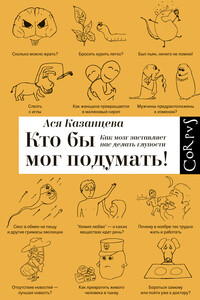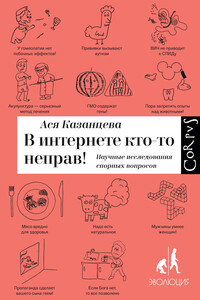22 Nordlee J. et al. Identifcation of a Brazil-nut allergen in transgenic soybeans // New England Journal of Medicine, Mar. 1996, Vol. 334, 688–692.
23 Сайт Ирины Ермаковой: http://www.irina-ermakova.ru/
24 Ермакова И. В. Влияние сои с геном EPSPS CP4 на физиологическое состояние и репродуктивные функции крыс в первых двух поколениях // Современные проблемы науки и образования. Биологические науки. 2009, № 5, с. 15–20.
25 Marshall A. GM soybeans and health safety – a controversy reexamined // Nature Biotechnology, Sep. 2007, Vol. 25, No. 9, 981–987.
26 Ermakova I. GM soybeans – revisiting a controversial format // Nature Biotechnology, Dec. 2007, Vol. 25, No. 12, 1351–1354.
27 Chassy B. et al. Response to GM soybeans – revisiting a controversial format // Nature Biotechnology, Dec. 2007, Vol. 25, No. 12, 1356–1358.
28 Seralini G-E. et al. RETRACTED: Long term toxici-ty of a Roundup herbicide and a Roundup-tolerant genetically modifed maize // Food and Chemical Toxicology, Nov. 2012, Vol. 50, Issue 11, 4221–4231.
29 Prejean J. et al. Spontaneous Tumors in Sprague-Daw-ley Rats and Swiss Mice // Cancer Research, Nov. 1973, Vol. 33, 2768–2773.
30 Konig A. et al. Assessment of the safety of foods derived from genetically modifed (GM) crops // Food and Chemical Toxicology, 2004, Vol. 42, 1047–1088.
31 EFSA Panel on Genetically Modifed Organisms (GMO). Guidance for risk assessment of food and feed from genetically modifed plants. EFSA Journal, 2011, Vol. 9(5), 2150 [37 p.]. Доступно по ссылке: http://www.efsa.europa.eu/en/efsajour-nal/pub/2150.htm#
32 European Comission. A decade of EU-funded GMO research. 2010. Доступно по ссылке: https://ec.europa.eu/research/biosociety/pdf/a_decade_of_ eu-funded_gmo_research.pdf
33 Klumper W., Qaim M. A meta-analysis of the impacts of genetically modifed crops // PLoS One, Nov. 2014, Vol. 9(11), e111629.
34 Rhee G. S. et al. Multigeneration reproductive and developmental toxicity study of bar gene inserted into genetically modifed potato on rats // Journal of Toxicology and Environmental Health, Part A, Dec. 2005, Vol. 68(23–24), 2263–2276.
35 Snell C. et al. Assessment of the health impact of GM plant diets in long-term and multigenerational animal feeding trials: a literature review // Food and Chemical Toxicology, 2012, Vol. 50, 1134–1148.
36 Van Eenennaam A., Young E. Prevalence and impacts of genetically engineered feedstuffs on livestock populations // Journal of Animal Science, Nov. 2014, Vol. 92, No. 10, 4255–4278 (обращайте внимание на название журнала: эти же авторы описали свое исследование еще и в маленькой новостной статье для издания ISB News Report, оставив при этом тот же самый заголовок, что создает путаницу).
Глава 6. “Кто видел птицу с зубами?”
1 Sherman M. Universal Genome in the Origin of Metazoa: Thoughts About Evolution // Cell Cycle, 2007, Vol. 6, Issue 15, 1873–1877.
2 Shoshani J. Understanding proboscidean evolution: a formidable task // Trends in Ecology and Evolution, Dec. 1998, Vol. 13, Issue 12, 480–487.
3 ВЦИОМ. Пресс-выпуск № 1372. Дарвинисты среди нас, или Кто создал человека и был ли всемирный потоп? 2009. http://wciom.ru/index.php?id=236&uid=12813.
4 Bloom P., Weisberg D. Childhood Origins of Adult Resistance to Science // Science, May 2007, Vol. 316, 996–997.
5 Kelemen D. Are children “intuitive theists”? Reasoning about purpose and design in nature // Psychological Science, May 2004, Vol. 15(5), 295–301.
6 Evans M. Cognitive and contextual factors in the emergence of diverse belief systems: creation versus evolution // Cognitive Psychology, May 2001, Vol. 42, 217–266.
7 Langergraber K. et al. Generation times in wild chimpanzees and gorillas suggest earlier divergence times in great ape and human evolution // PNAS, Sep. 2012, Vol. 109, No. 39, 15716–15721.
8 The chimpanzee sequencing and analysis consortium. Initial sequence of the chimpanzee genome and comparison with the human genome // Nature, Sep. 2005, Vo l. 437, 69–87.
9 Bourque G. Reconstructing the genomic architecture of ancestral mammals: lessons from human, mouse, and rat genomes //



